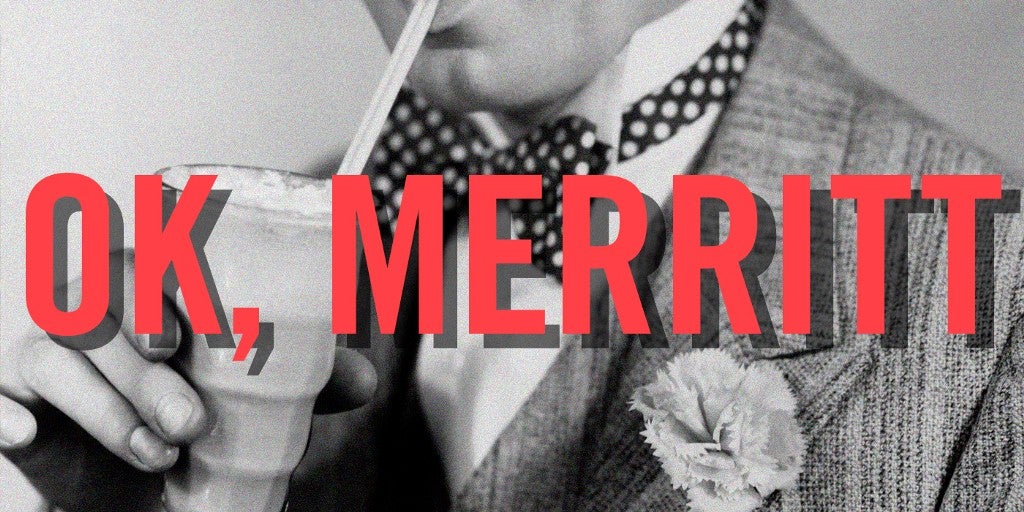I recently attended my father’s wedding. He doesn’t drink, and partly in solidarity with him and partly having reached an age where one beer shoots me straight past tipsy and drunk to tired and uncomfortable, I decided not to either.
During dinner, I overheard one of my dad’s friends jokingly mention how much more fun he used to be when he drank. It made me seethe, but the reality is that unless you have a “good” reason (like being on meds or having a religious prohibition), not drinking still typically raises eyebrows. Even alcoholism isn’t considered a legitimate reason to refuse by some.
I’m a vegetarian, and while the phenomena are totally different, the reaction they can provoke is similar: Choosing not to partake is interpreted by some as an indictment of their choice to do so — even if you couldn’t care less what they eat or drink.
If you’re participating in Dryuary, then perhaps you’ll encounter some of these types. But here’s the thing about them: They’re projecting their insecurities about their own drinking onto you. Your decision to not drink doesn’t reflect on anyone else’s, and if they feel that it does, maybe that’s a sign that they should examine their relationship to alcohol.
I personally can’t speak to the struggles of being in recovery, but there are plenty of occasions on which I choose not to drink. Hence: My guide to situational sobriety for those considering taking off the month from booze. Because, to paraphrase the Talking Heads, you may find yourself in a social setting organized around drinking. And you may ask yourself: “Well, what do I drink here?”
Why Stop Drinking in the First Place
Maybe you really do have to get up early tomorrow. Maybe alcohol messes with your sleep, like it does for me. Maybe you’re worried about alcohol’s impact on your health. Maybe you’re trying to save money. Maybe you’re working on your skincare game. Maybe you’re trying to avoid whiskey dick.
As MEL’s booze correspondent, Haley Hamilton, previously wrote, there are as many reasons not to drink on any particular occasion as there are reasons to do so. For instance, my dad didn’t drink at his wedding because he hasn’t done so in three years, and I didn’t because I just didn’t feel like it.
What to Drink Instead of Booze
Seltzer: Same as it ever was, seltzer is the entry-level choice of the non-drinker. Not merely a mixer minus the mixee, seltzer is a fine, adult beverage in its own right — a world apart from a simple glass of water. It’s sophisticated but playful, stoic yet animated. At my father’s wedding I set a personal record for seltzer consumption, having downed probably near a dozen pint glasses of the stuff by the time things finally wrapped up. I regretted nothing aside from the mild frostbite inflicted by hours of lugging around icy pint glasses.
If you get tired of plain old soda water, try a food professional secret: bitters and soda. Some bitters do have a little bit of alcohol so this doesn’t qualify as strictly nonalcoholic, though it’s a far cry from drinking, say, an Old Fashioned. It’s a little more fancy than straight seltzer — Patsy Stone might call it bits and bubs, if she’d ever be caught dead drinking a nonalcoholic beverage.
Virgin Cocktails: Not all of us can live on seltzer alone, though. If you’d like to take your non-alcoholic game to the next level, then enter the exciting world of virgin cocktails — mocktails if you’re nasty and/or in a hurry. Mocktails preserve all of the wonderful presentation, complexity and opportunities for shared socializing as their boozy counterparts, minus the alcohol. Virgin mojitos, negronis and margaritas are all well-trod territory, but non-alcoholic mixed drinks have expanded to cover a wide range between liquor and simple sodas. Have you, for example, tried a shrub? Shrubs are incredible: they’re sort of flavored drinking vinegar.
Okay, that’s maybe not the best sell, but they’re well worth trying if they’re on the menu.
Non-alcoholic Beer: “Near beer” isn’t completely non-alcoholic — in the U.S., it can contain up to half a percent of alcohol by volume. But if you’re not in recovery — and if you are, this probably isn’t the guide for you — they’re a great alternative to regular beers.
What’s the point of low-ABV beer? You could ask the same question about caffeine-free soda. Some people, and I’m among them, genuinely enjoy the taste. And much like the mocktail, near beer is a way to participate in the social rituals of the bar, the party or the show without actually drinking. Is it worth interrogating how alcohol-centric our social spaces are? Absolutely. But that doesn’t change the fact that there are going to be nights when you want to spend time with your friends but don’t necessarily want to drink. Near beer provides a kind of cover — not a solution to the problem of a intoxication-focused culture, but certainly a way to navigate it.
How to Answer All the Inevitable Questions
Of course, not everyone will take “not feeling like it” as a legitimate reason not to partake. If you don’t feel confident in your ability to abstain on those grounds, there’s always the classic excuses: You’re taking meds that prevent you from drinking; you’ve got to get up early tomorrow morning; you’re in some kind of bet to see who can go the longest without booze, etc.
But at the risk of sounding like a mom: Anyone who pressures you into drinking when you don’t want to or heckles you for abstaining isn’t being a great friend to begin with.
So go ahead and drink as many mocktails as you’d like.
